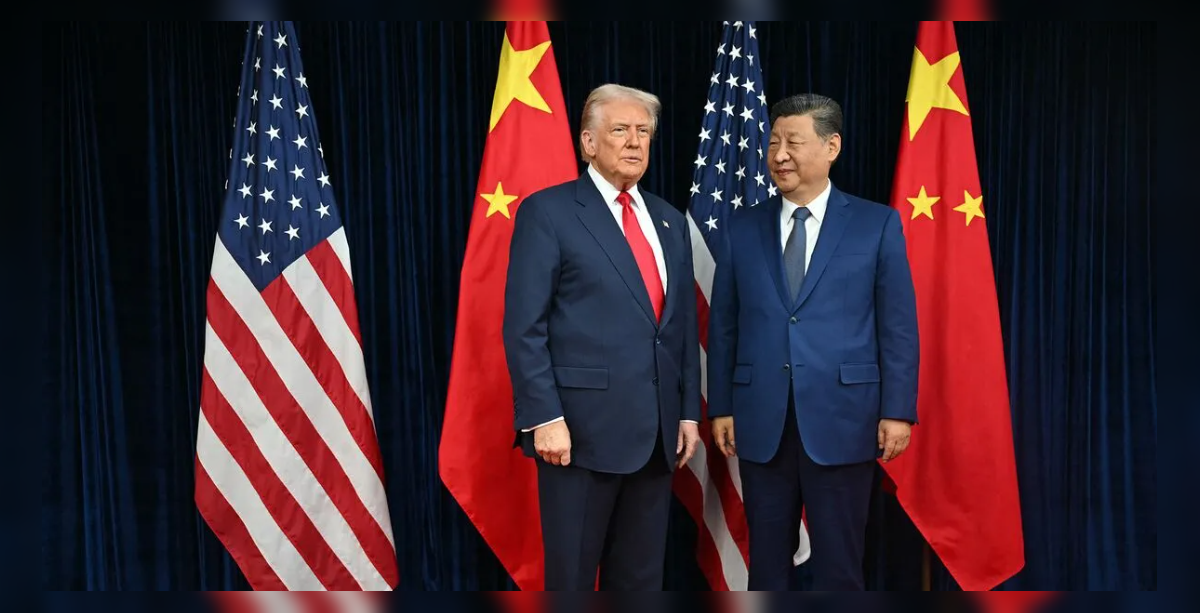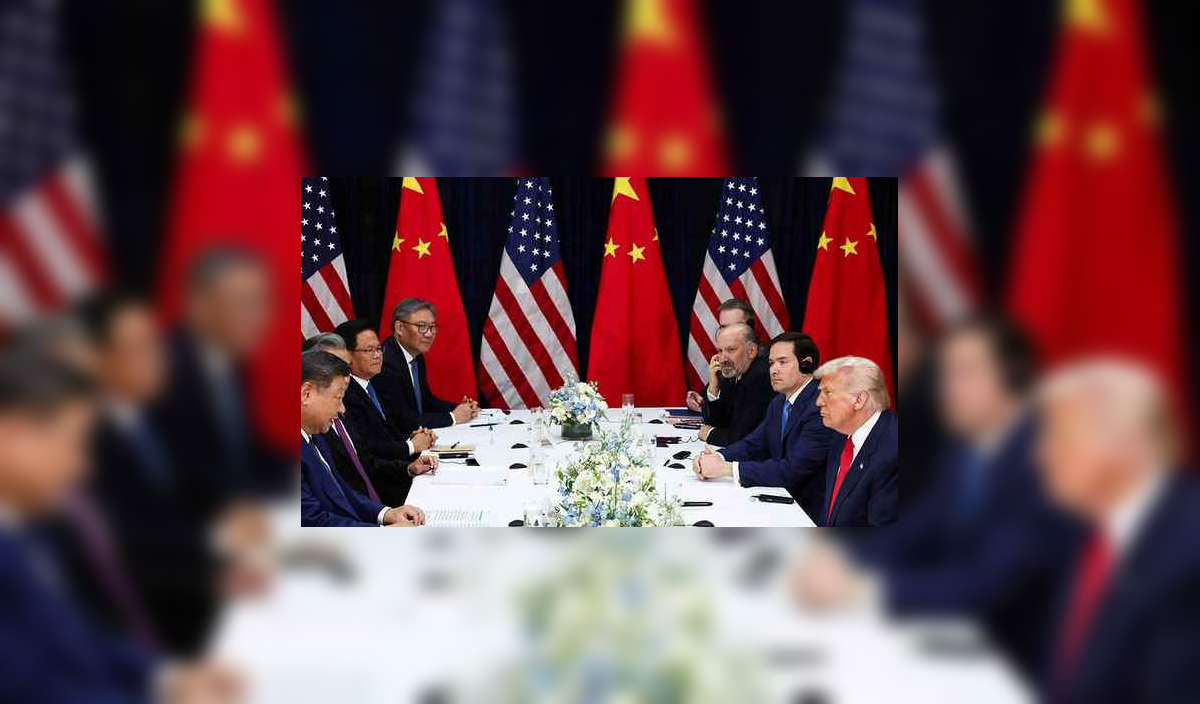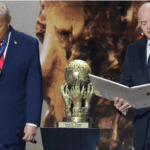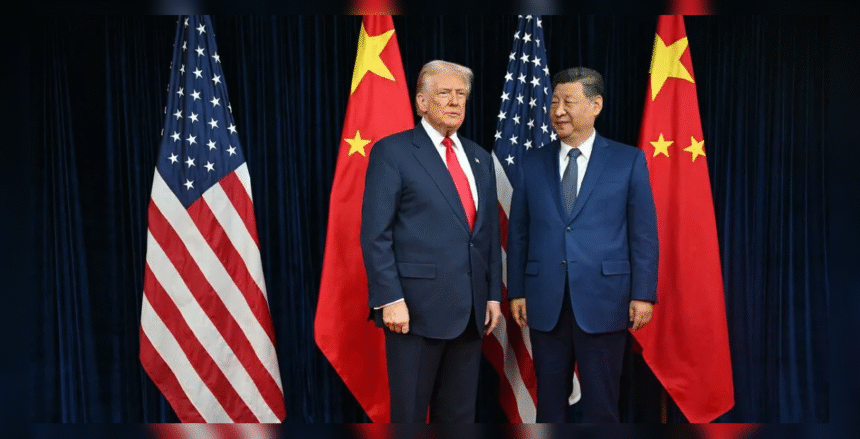1. Introduction
Trump-Xi Seek Trade War Truce In a high-stakes pivot of global economic diplomacy, Donald Trump, President of the United States, and Xi Jinping, President of the People’s Republic of China, agreed in late October 2025 to what is best described as a truce rather than a full resolution in their ongoing trade war. The two economic super-powers, having traded rounds of escalating tariffs, export controls, and threats of supply-chain decoupling, have taken a step back from the brink. Key to this agreement was a thawing of tensions around tariffs and the critical domain of rare-earth minerals.
This article will examine the origins of the confrontation, what exactly was agreed between Trump and Xi, the implications (both economic and strategic) of the truce, and what still lies ahead. We will also look at how rare‐earths became a focal point, tying trade policy to national-security concerns, and reflect on whether this marks a durable shift—or simply the calm before another storm.
2. Background: From Trade War to Technology War
2.1 The escalation phase
The US‐China trade conflict has evolved dramatically: what started as a dispute over tariffs on goods expanded into technology export controls, supply-chain disruptions, rare-earth mineral restrictions, and even drug-precursor (fentanyl) allegations. Reports indicated that US tariffs on Chinese goods had averaged around 55 % at one point. Meanwhile, China had moved to tighten controls on exports of rare-earth magnets and minerals — a critical chokepoint given China’s dominant position in global processing of those materials.
At the same time, Trump-Xi Seek Trade War Truce US export controls on advanced semiconductors and other critical technologies had become a core part of the confrontation. Thus, the trade war was no longer just about “goods” but about industrial dominance, technology, supply chains and strategic leverage.  FORE MORE INFORMATION
FORE MORE INFORMATION
2.2 Rare earths: the hidden battleground
Rare‐earth elements and magnets are used in everything from smartphones and electric vehicles to military hardware. China already controls a large share of the refining process globally. When China moved to impose stricter export controls, it triggered alarms in Washington about the vulnerability of the US (and allies) industrial base.
In response, the US threatened dramatic tariff hikes (including up to 100 % on Chinese goods, according to some reports) and broadened export-control lists of Chinese firms. The dynamic became one of “who has the stronger chokehold” in the global value chain.
By late October, both sides seemed to recognise that an uncontrolled escalation would be economically harmful to both—and the world.
3. The Trump-Xi Meeting & The Truce
3.1 Where it happened & what was announced
The bilateral meeting took place on the sidelines of the Asia‑Pacific Economic Cooperation (APEC) Summit in Busan (South Korea).
Key announcements included:
-
The US agreed to reduce certain tariffs on Chinese goods — the so-called fentanyl-related tariff cut and an overall rollback from 57 % to 47 % of average tariffs on Chinese goods.
-
China agreed to resume purchases of US soybeans, a politically important win for US farmers.China committed to delay or suspend its export restrictions on selected rare‐earth materials for at least a year, thereby alleviating one of the major supply-chain flashpoints.
-
The US agreed to hold off on expanding export controls to many Chinese-affiliated firms, and China agreed to some measures on fentanyl precursor controls.
-
Both sides indicated that they plan further high-level engagements: Trump is expected to visit China in April, Xi to visit the US later.
3.2 What the truce is not
It is crucial to note that this is widely regarded as a temporary pause rather than a definitive resolution. Major structural issues remain unresolved:
-
The US imbalance in trade and industrial subsidies from China.
-
China’s long-term ambitions in AI, chips, high technology, and global value-chain leadership.
-
Taiwan, national security, and geopolitical rivalry remain distinct though overlapping domains.
-
The export-control regime on semiconductors remains largely intact; China did not suddenly get access to all US tech. Some restrictions remain tight
Thus, what emerged is better described as a truce or “step back” rather than a full peace treaty.
4. Who Wins and Who Waits?
4.1 Short-term political gains
From the US side:
-
A reduction in tariffs gives some relief to US businesses and consumers (though still high compared to normal).
-
Resumption of Chinese soybean purchases aids the US farm belt — a key constituency.
-
Trump can portray the deal as a “win” ahead of further engagements.
From the Chinese side: -
China wins a reprieve on rare‐earth export controls, maintaining its leverage in global supply chains.
-
China avoids further immediate escalation of tariffs, giving its economy breathing space.
-
China signals that it can play the long game: by getting the US to step back, it preserves strategic leverage.
4.2 Longer-term strategic calculus
Analysts caution that the truce is more about buying time and repositioning than settling fundamental differences. As one report puts it, China “has the advantage as talks continue — and the US risks losing the leverage it has.”
Key strategic points:
-
The US needs to rebuild its domestic supply chains and reduce dependencies on China.
-
China intends to decouple strategically from US dominance in certain technologies and minerals.
-
Both countries know a full economic decoupling is too costly, Trump-Xi Seek Trade War Truce but strategic decoupling (in critical domains) is underway.
 FORE MORE INFORMATION
FORE MORE INFORMATION
4.3 Market and global impacts
The market reaction was muted: stock indices did not surge dramatically on the announcement. Some investors noted that the deal lacked detail and clarity.
Globally,Trump-Xi Seek Trade War Truce the truce provides a temporary relief: for countries embedded in US or Chinese supply chains, the risk of immediate escalation receded. Yet the broader uncertainty remains — making long‐term investment decisions harder.
5. Rare Earths: Why the Truce Matters
5.1 The strategic choke-point
Rare‐earth elements (REEs) and rare‐earth magnets are central to high-tech manufacturing, defence systems, clean energy technologies, electric vehicles, and more. China currently dominates much of the refining and processing chain for these minerals.
By threatening to restrict or control exports of rare earths, China holds a potent bargaining chip: it can slow down global supply chains or raise costs for competitors — especially the US and its allies.
5.2 What the agreement did
Under the truce, Trump-Xi Seek Trade War Truce China agreed to delay application of certain export controls on selected rare-earth materials for at least a year. This eases immediate supply-chain pressure on the US and its allies.
For the US, the relief means it will not face an immediate disruption of those minerals from China, giving time to ramp up alternate sources and domestic production.
5.3 But the leverage remains
While this delay is beneficial, Trump-Xi Seek Trade War Truce it does not remove China’s monopoly or strategic position. Analysts observe that China still retains the ability to switch controls back on.
Thus what we have is a deferred threat rather than a neutralised one. The US (and other countries) must still invest in diversifying supply, Trump-Xi Seek Trade War Truce recycling, Trump-Xi Seek Trade War Truce substitution and building domestic capacity.
6. Strategic Economics: Tariffs, Trade and Technology
6.1 Tariffs remain high
Even after the reduction, average US tariffs on Chinese goods remain around 47%—still far above traditional trade-war levels Chinese average tariffs on US goods are approximately 32%
This means trade is still significantly distorted and the cost of producing goods remains elevated for global firms tied into US-China supply chains.
6.2 Technology control remains central
The conflict now revolves not just around goods but technology: semiconductors, AI chips, quantum hardware, data infrastructure and supply chains for critical minerals. The US export-control regime remains in place; Trump-Xi Seek Trade War Truce the truce did not broadly reverse tech restrictions.
This makes the trade war less about tariff-levels and more about national industrial strategy.
6.3 Supply-chain realignment
One of the underlying moves by both the US and China is to realign supply chains: the US aims to reduce reliance on China in critical areas; China aims to build internal capacity and alternative markets. As one expert put it: “We won’t see full decoupling — but strategic decoupling is underway.”
For multinationals and countries outside the US/China axis, Trump-Xi Seek Trade War Truce this implies a more complex future: multiple supply-chain blocs, higher costs, more geopolitically driven sourcing.
7. Risks, Uncertainties and What Lies Ahead
7.1 The fragility of the truce
The deal between Trump and Xi is time-limited (roughly one year) and lacks in many areas precise enforcement mechanisms. The risk of renewal, escalation or derailment is high.
Any misstep—e.g., a new Chinese export control, Trump-Xi Seek Trade War Truce an unanticipated US tariff hike, or a geopolitical flare-up (Taiwan, South China Sea, technology espionage)—could reignite the conflict.
7.2 Unresolved issues
Major underlying disputes remain: subsidies, market access, Chinese state-owned enterprises, intellectual property, forced technology transfers, human rights concerns, Trump-Xi Seek Trade War Truce Taiwan and national security more broadly. These were largely not resolved in the truce.
Therefore, this does not mark the end of competition—it marks a pause.
Other countries and regions will watch closely:
-
US allies and partners must decide how they align or hedge between the US/China spheres.
-
Industries reliant on rare earths, technology inputs or global supply chains may face increased cost and policy risk.
-
Developing countries may find themselves squeezed between tariffs, Trump-Xi Seek Trade War Truceexport-controls and supply-chain realignment.
7.4 Domestic political risks
In the US, farmers, manufacturing workers and consumers remain vulnerable to supply disruptions and cost increases. The deal gives some relief but does not restore “normalcy”. For China, Trump-Xi Seek Trade War Truce maintaining economic growth, exports and employment is critical—so stepping back now buys domestic breathing room. But internal pressures remain.
8. Regional & Global Implications
8.1 Indo-Pacific & Supply-chain reconfiguration
In the Indo-Pacific region (including India, Trump-Xi Seek Trade War Truce Southeast Asia, Australia), Trump-Xi Seek Trade War Truce the truce may slow abrupt decoupling but the long-term trend of supply-chain diversification away from China will continue. Countries in the region may be asked to pick sides, or to serve as alternate manufacturing hubs.
The rare‐earth dimension particularly is important: countries like Australia, India and others may seek to ramp up production or processing of critical minerals to reduce dependence on China.
8.2 Multilateral trade and global governance
The trade war and its truce highlight the limitations of the existing multilateral trade architecture. Bilateral deals, export-controls, Trump-Xi Seek Trade War Truce technology restrictions and national security exceptions are becoming more central than traditional tariff-negotiation forums.
The role of organisations like the World Trade Organization may be further marginalised if strategic trade becomes nationalised.
8.3 Technology, defence and economic interdependence
Trade and economics are now strategically linked: rare-earths, semiconductors, AI chips, satellites and defence hardware are part of the same contest. The truce signals recognition of this reality—both sides will invest heavily in controlling supply chains for strategic advantage.
9. Assessment: A Step Back or a Strategic Reset?
The Trump‐Xi truce represents a step back from escalation but not a strategic reset of the entire architecture of US-China economic relations.
It provides short-term relief and signals that both sides recognise the damage of unbridled trade conflict. But the underlying structural competition—industrial dominance, technology control, supply-chain leadership—remains intact, perhaps even sharpened.
In that sense, commentators argue that China may have gained the more favourable position: by forcing a pause, it retains leverage and buys time to build domestic strength. The US, meanwhile, has limited flexibility and internal vulnerabilities (farmers, consumers, industries) that may force sub-optimal diplomacy
One analyst noted: “This is a truce if they can keep it.”
Thus, for analysts and policymakers, the key question becomes: What happens when the one-year pause ends? How will semiconductors, rare earths, technology export rules, Trump-Xi Seek Trade War Truce state subsidies and geopolitical flashpoints (Taiwan, South China Sea) shape the next phase?
10. What to Watch Going Forward
-
Renewal or breakdown: Will the truce be extended beyond one year? Will either side push new tariff or export-control actions?
-
Rare-earth supply-chain moves: Will China resume restrictions? Will the US/partners develop alternative processing capacity?
-
Semiconductor and technology controls: Will access remain restricted? How will US alliances respond (Japan, South Korea, EU)?
-
Geopolitical flashpoints: Taiwan, South China Sea, North Korea, Trump-Xi Seek Trade War Truce India-China border—all could become triggers for renewed tension.
-
Domestic responses: In the US, will farmers & manufacturers benefit materialy? In China, Trump-Xi Seek Trade War Truce will slowed exports or tech restrictions impact growth?
-
Global diversification: Will other countries leverage this pause to reposition themselves in supply chains or strategic minerals?
11. Conclusion
The meeting between Trump-Xi Seek Trade War Truce in Busan marks a significant moment: the world’s two largest economies chose to step off the red-line of full tariff war and supply-chain meltdown. The truce provides breathing space. It signals recognition of mutual economic interdependence, even amid strategic rivalry.
Yet this is not a victory lap. Instead, it is a strategic pause. Rare earths, tariffs, and technology remain hardened battlegrounds. The truce buys time, Trump-Xi Seek Trade War Truce but also raises the stakes: both sides must now use this time wisely. The US must strengthen its supply-chain resilience; China must convert its leverage into structural gains.
For the rest of the world, Trump-Xi Seek Trade War Truce this moment underlines a shifting paradigm: trade is no longer just commerce—it is a vector of strategic competition. What happens next will shape global economics for the next decade. As the experts warn: the deal “but buys time” — the real test lies ahead.
In short: Trump and Xi may have paused the war over tariffs and rare earths, but they did not end it. The real battle has merely changed its tempo. ALSO READ:Police Rescue 19 People Held Hostage in Mumbai Studio; Captor Shot Dead 2025






Just stumbled across p898casino. Looks like it might be a chill place to unwind after a long day. Will report back after a few rounds!